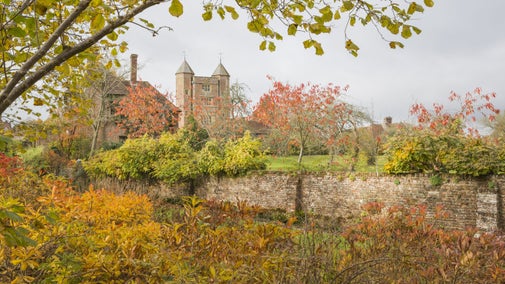The garden at Sissinghurst Castle Garden
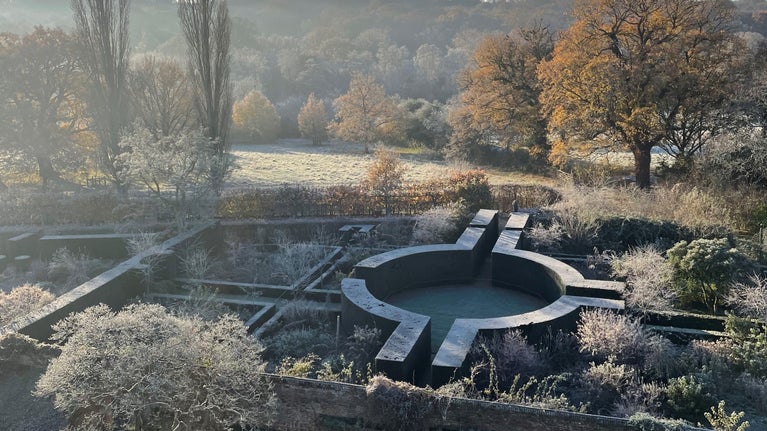
Jump to
Discover why Sissinghurst is famous as the epitome of the English garden and explore its series of garden rooms, each filled with different planting schemes and unique designs. Heralded for its beauty and diversity, the garden is a result of the creative tension between Harold Nicolson's formal design and the exuberant planting of Vita Sackville-West.
Your visit to the garden
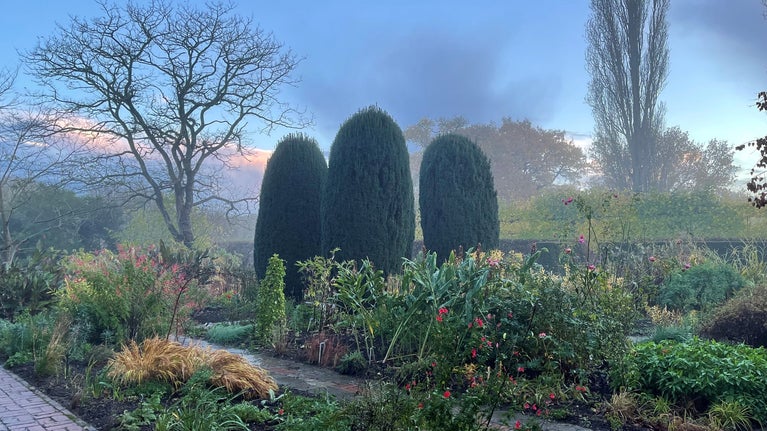
Winter highlights in the garden
Discover the bare beauty of the garden in winter and the structure which provides the framework for abundant planting later in the year. Walk at your leisure around the garden to discover the structure and architecture at its best. Winter is a busy time for our garden team as they prepare for Spring. Watch them hard at work across the garden, tackling tasks from rose pruning, biennial planting, mulching, hedge cutting and much more.
The first bulbs of the season will emerge in January, beginning to flourish in February. Snowdrops, Irises, Crocuses and Hellebore are among the first signs of colour that visitors can spot.
With indoor spaces such as the tower open every day you can dive into the rich literary history of Vita Sackville-West and Harold Nicolson's former residence. The tower also allows for a great bird's-eye view, providing a different perspective of the garden's layout which is most impactful during the winter.
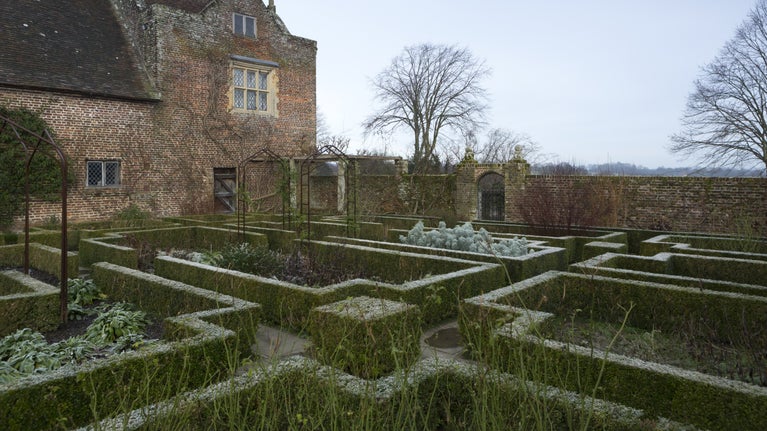
The White Garden
Wander through the White Garden for a refreshing contrast to the more colourful parts of the garden. Vita decided that only the colours of white, green, grey and silver were to be allowed to grow in this garden and it's now one of the most famous areas at Sissinghurst.
The origins
Vita understood that when colour is restricted, the gardener has to focus on creating interest and drama with different shapes, textures and form.
When planning the garden, Harold found some white gladioli, white irises, white pompom dahlias and the white Japanese anemones, which he and Vita both loved. Look out for evidence of his all-important structure here, too – yew and box hedging allow the white flowers and silver foliage to shine out against the dark background.
Documenting the garden's creation
In her plans, Vita imagined ‘a low sea of grey clumps of foliage, pierced here and there with tall white flowers’ and by 1953 she was able to report to her Observer readers how this vision was progressing.
She writes about various grey mounds: artemisia, the silver Cineraria maritima, grey santolina and Achillea ageratifolia. These are pierced with the upright white trumpets of Lilium regale and the white spires of eremurus, foxgloves and delphiniums.
There are shrubs to add volume and structure; Hydrangea grandiflora, a white cistus, Paeonia suffruticosa subsp. Rockii and Buddleia nivea as well as trees such as Hippophae rhamnoides, a Pyrus salicifolia ‘Pendula’ and almond trees lining the central path. The giant Arabian thistle Onopordon arabicum surges up 8 feet into the air, whilst foamy gypsophila softens the planting.
Today, the garden team strives to maintain the White Garden in this way using a mixture of shrubs, roses, perennials and annuals to create interest and drama.
A worthwhile challenge
It was the contrast of all these plants together that created interest for the eye, despite the absence of colour. Vita seemed to relish the challenge, writing:
It is something more than merely interesting. It is great fun and endlessly amusing as an experiment, capable of perennial improvement, as you take away the things that don’t fit in, or that don’t satisfy you, and replace them by something you like better
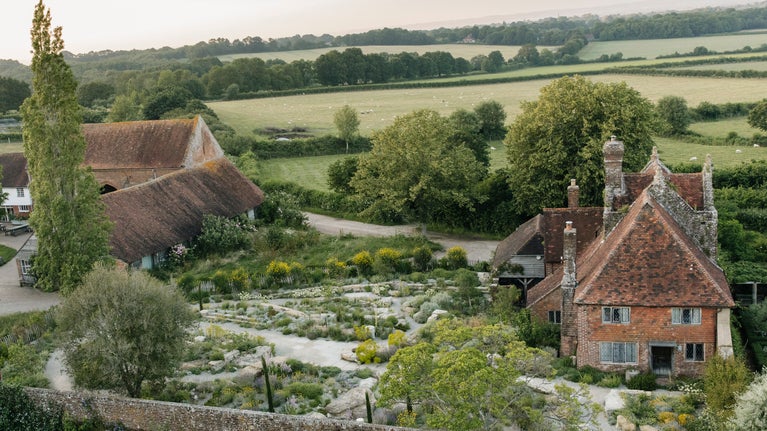
Delos
Experience a taste of island life as you walk through Delos, the area of the garden named after the Greek island and inspired by Vita and Harold's visits there.
The couple had wanted to emulate the feel of the island both in planting and with a ruined feel but, unfortunately, the Kent climate and the garden's north-facing position proved problematic. This, combined with their limited knowledge of Mediterranean planting, meant that it never really became all they hoped it would be.
A must-see in the garden
Regional Curator Dr Jerzy J Kierkuc-Bielinski highlights a feature of Delos that you shouldn't miss:
'The garden rooms at Sissinghurst contain a number of objects that evoke the worlds of ancient Rome or of ancient Greece. Amongst these, I think that the group of Hellenistic altars from the sacred island of Delos are the most intriguing. What ancient rites or sacrifices were performed at these altars?
'Harold Nicolson’s ancestor Captain Hamilton fought in the Greek War of Independence during the 1820s. It was he who brought the altars from Delos to Shanganagh Castle in Ireland. From there they would eventually be brought to Sissinghurst by Harold.'
Would you like to know more about our team's priorities when you visit? Our Gardeners' Cuttings are monthly updates written by the garden team that can be picked up at the garden entrance or read online.
You might also be interested in
Visiting Sissinghurst Castle Garden with your dog
Sissinghurst Castle Garden is a one pawprint rated place. Dogs are welcome so you can feel at ease when strolling through the estate. Here's some useful information to help you enjoy your walk.
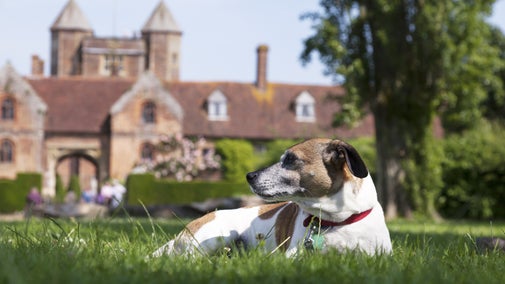
Reimagining Delos at Sissinghurst Castle Garden
Find out more about the final phase in developing the Delos garden at Sissinghurst Castle, reimagined from Vita and Harold’s original vision.
Gardening tips
Discover our gardeners’ top tips so you can make the most of your garden, plot or window box.
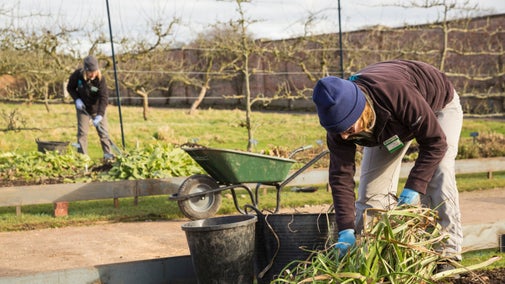
Gardens in Kent
Wander through the National Trust’s autumn gardens in Kent, where golden foliage and late-season blooms create a tapestry of rich colour and texture. Admire the russet tones and crisp air at Sissinghurst Castle, stroll through the mellow hues of Chartwell’s borders, and enjoy the romantic reflections of autumn leaves in the moat at Scotney Castle. From fiery rudbeckia and amber lilies to Japanese anemones and ornamental grasses swaying in the breeze, Kent’s historic gardens offer a serene and striking celebration of the season.
